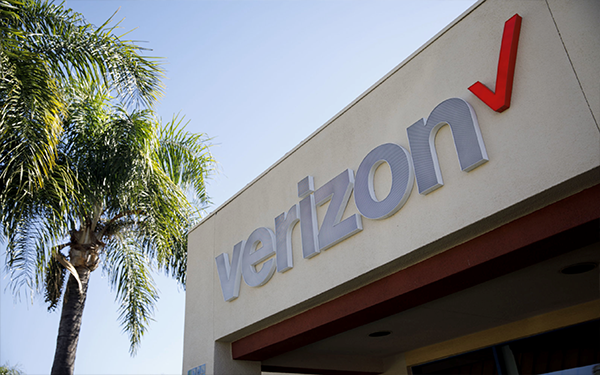In an era characterized by rapid technological advancements and shifting consumer behaviors, the telecommunications sector faces unprecedented challenges and opportunities.
Verizon Communications, a long-standing leader in the U.S. mobile services market, finds itself at a crossroads. The company’s recent strategic rebranding, spearheaded by Chief Marketing Officer Leslie Berland, marks a pivotal moment in its quest to maintain relevance and drive growth amid changing market dynamics.
This essay explores the motivations behind Verizon’s rebranding initiative, the implications of consumer behavior on telecommunications companies, and the strategic choices made to reinvigorate the brand’s connection with its audience.
Verizon has enjoyed a dominant position in the telecommunications industry, with a brand awareness rate of approximately 99%.
This recognition is a significant asset, as it reflects consumer trust and respect for the company. However, despite this high level of awareness, recent market trends have posed challenges to Verizon’s profitability.
A notable shift has emerged among price-conscious consumers who are increasingly opting to retain their existing mobile devices rather than upgrading to the latest models.
This behavior has adversely affected the revenue streams of telecommunications companies that traditionally rely on the sale of new mobile lines to drive growth.
In light of these developments, the decision to rebrand was not merely a cosmetic change but a strategic necessity.
Berland articulated the need to bridge the gap between Verizon’s perceived reliability and its actual presence in consumers’ daily lives.
The challenge lies in transforming the company’s “invisible” services—those that operate seamlessly in the background—into a tangible and meaningful part of consumers’ experiences.
By repositioning Verizon as not just a telecommunications provider but as a vital component of everyday life, the rebranding initiative seeks to strengthen the emotional connection with consumers.
The rebranding effort, which includes a bold update to Verizon’s iconic checkmark logo, is rooted in a comprehensive understanding of consumer perceptions and market trends.
Berland highlighted that while the checkmark symbolized reliability, it also conveyed a transactional essence that failed to resonate emotionally with consumers.
The decision to integrate the checkmark into the “V” of Verizon represents a strategic shift towards creating a more personal and relatable brand identity.
This design choice not only enhances brand recognition but also harkens back to the company’s origins, drawing from the Latin words “veritas” (truth) and “horizon” (possibility).
The new logo, characterized by a lighter red hue and a glowing effect, symbolizes the potential for connection and growth in consumers’ lives.
Moreover, the rebranding aligns with the broader trend within the telecommunications industry, where marketing has become increasingly homogenous.
Berland’s observation of a “sea of sameness” in telecom advertising underscores the necessity for Verizon to differentiate itself through bold and innovative messaging.
By adopting a fresh and engaging approach, the company aims to capture consumer attention and foster a deeper connection with its audience.
The decentralization of social media and the rapid evolution of digital communication channels have further influenced Verizon’s branding and marketing strategies.
As consumers navigate a fragmented media landscape, the challenge for brands is to deliver the right message to the right audience at the right time.
Berland acknowledges the opportunities presented by this fragmentation, emphasizing the potential to engage consumers through targeted messaging tailored to their preferences and behaviors.
In this context, Verizon’s partnerships with popular streaming services, such as Netflix and Disney, represent a strategic move to enhance its value proposition.
By offering promotional bundles that integrate telecommunications services with entertainment options, Verizon not only diversifies its offerings but also positions itself as a comprehensive provider of lifestyle solutions.
This approach not only appeals to price-sensitive consumers but also reinforces Verizon’s commitment to being a relevant and integral part of their lives.
The rapid evolution of conversational dynamics in the digital landscape has profoundly transformed the strategies and methodologies employed by marketers, necessitating an adaptive and forward-thinking approach to communication and brand management.
As the nature of discourse shifts at an unprecedented pace, the implications for brands, including Verizon, are significant and multifaceted.
One pressing concern that has emerged in this context is the proliferation of AI-generated misinformation, which poses a substantial risk to brand integrity and consumer trust.
In response to this challenge, the marketing industry has had to cultivate a heightened level of sophistication in its tactics for identifying and mitigating misinformation.
This evolution has been marked by the implementation of advanced tools and technologies designed for comprehensive monitoring, tracking, and assessment of online narratives.
Additionally, organizations are increasingly adopting robust policies and frameworks that facilitate a proactive stance in addressing misinformation, thereby ensuring agility and responsiveness in their communications.
As a result, the ability to navigate the complexities of the digital information ecosystem has become paramount, underscoring the necessity for continuous evolution in marketing practices to safeguard brand reputation and maintain consumer confidence in an era characterized by rapid change and uncertainty.

Verizon Communications’ recent rebranding initiative, led by Leslie Berland, reflects a strategic response to the evolving landscape of the telecommunications industry.
By addressing the challenges posed by changing consumer behaviors and market dynamics, Verizon seeks to strengthen its emotional connection with consumers and redefine its role in their lives.
The integration of the checkmark into the brand’s logo, coupled with innovative marketing strategies, positions Verizon to break through the clutter of the telecommunications market and establish itself as a trusted partner in the journey of modern life.
As the company navigates this transformative phase, its ability to adapt to consumer needs and preferences will be crucial in sustaining its leadership position in the industry.
Ultimately, the success of Verizon’s rebranding efforts will hinge on its capacity to make the invisible visible and to forge meaningful connections with its audience in an ever-changing digital landscape.
